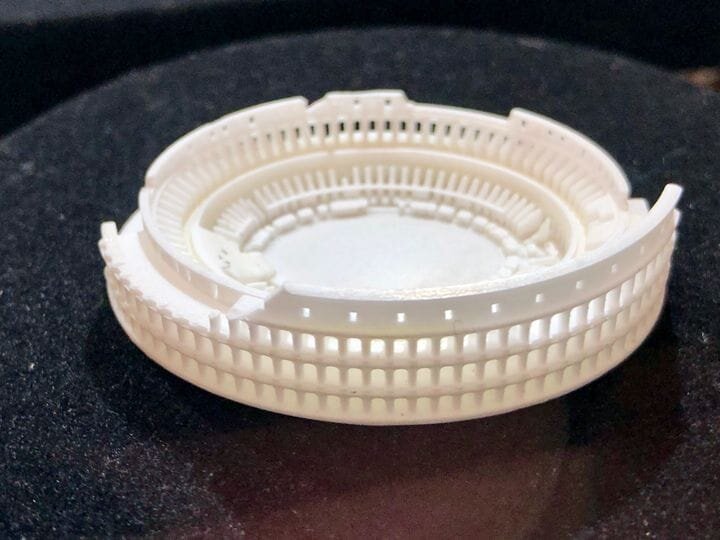![The Admatec 300 ceramic and metal 3D printer [Source: Fabbaloo]](https://fabbaloo.com/wp-content/uploads/2020/05/admatec-300-1_img_5eb08c57d94fd.jpg)
We had a look at Admatec’s new Admaflex 300 3D printer.
Netherlands-based Admatec specializes in 3D printers capable of producing ceramic and metal objects. Their process involves the use of a DLP light engine that selectively cures liquid photopolymer resin, layer by layer.
That process may sound familiar, as it is essentially the foundational process for many resin 3D printers. However, Admatec has a slightly different method of delivering resin to the print engine that enables some significant advantages.
3D Printer Resin Viscosity
Most resin 3D printers simply hold the liquid resin in a tank, where the resin is required to flow around the print to present fresh material to form a new layer. However, this is quite challenging when the resin is viscous.
In order to flow, the resin must not be particularly viscous. This constrains this type of 3D printer to less viscous mixtures of powder and photopolymer resin. The implication is that mixtures with high ratios of powder to resin are usually impossible or at least very challenging to 3D print with many resin 3D printers.
That’s not the case with Admatec’s system, which is capable of handling extremely viscous resin mixtures. They say they can even 3D print resins as viscous as toothpaste, which is patently impossible on any other resin 3D printer I’m aware of.
Admatec Foil System
How do they do this? Admatec uses a circulating foil system, in which a layer of resin (which might even be called “paste” at this point) is uniformly applied to the foil surface. The foil then moves under the light engine and is 3D printed in the usual manner. Then, after moving the foil out, the unused resin can be reclaimed through filters and reused on subsequent layers.
The result is that Admatec’s equipment is capable of 3D printing ceramics and metal mixtures not easily done using other resin 3D printers. This is quite attractive to certain industries, where particular ceramics are required.
Completed 3D prints must then have the binder removed through a heat process, followed by a sintering step to meld the ceramic or metal particles together.
Admaflex 300
![3D printed ceramic shapes by Admatec [Source: Fabbaloo]](https://fabbaloo.com/wp-content/uploads/2020/05/image-asset_img_5eb08c58376a4.jpg)
While Admatec has been quite successful with their Admaflex 130 device, they now also offer the Admaflex 300, a much larger machine.
The Admaflex 300 sports a 200 x 200 x 300 mm build volume, much larger than the previous model’s 96 x 54 x 110 mm build volume. Twenty times as large, in fact.
Custom 3D Printer Resins
![Miniature 3D printed ceramic colosseum by Admatec [Source: Fabbaloo]](https://fabbaloo.com/wp-content/uploads/2020/05/image-asset_img_5eb08c58743dc.jpg)
All of Admatec’s machines, including the new Admaflex 300, offer full control over 3D print parameters. This is because they encourage the use of custom-developed resins. The idea is that manufacturers can experiment with different metal or ceramic particles to create unique materials.
Admatec tells us they are seeing a lot of usage in investment casting using their equipment, where ceramics can be used to produce unusual molds.
Admatec Pricing
Finally, they tell us the Admaflex 300 can be optionally extended to a huge 500 mm height for an additional fee above the machine’s list price of €280,000 (US$311,000).
Via Admatec

